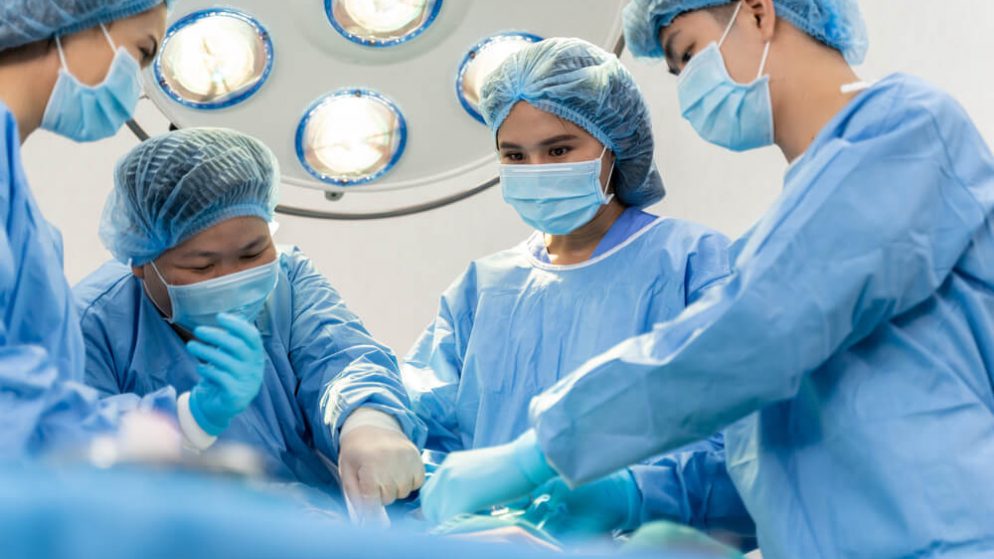



Get new exclusive access to healthcare business reports & breaking news




The Altemeier procedure, known formally as the Altemeier perineal recotosigmoidectomy, is performed to correct rectal prolapse. In this article, we will take a closer look at what a rectal prolapse is, and go through the Altemeier procedure step-by-step so that you will become familiar with what to expect from this operation.
When the walls of the rectum displace enough so that they extend out of the anus and are easy to see outside of the body, this is what is known as rectal prolapse. According to many researchers, there are between three and five ways in which the rectal prolapse can occur. It depends on if the extended section of the rectum is visible externally, and how much of the rectal wall thickness (full or partial) is part of the prolapse. It is important to note that rectal prolapse does not always occur with symptoms.
However, depending on the type of prolapse, there are signs to watch for. They include rectal bleeding, symptoms of obstructed defecation, mucous discharge from the anus, and degrees of fecal incontinence. Although rectal prolapse can happen to anyone at any age, it appears to be more common in elderly women. The condition is not considered life-threatening, but the symptoms can be debilitating if left unchecked. The majority of rectal prolapse incidents have successful treatment results requiring surgery. The exception is internal prolapses which are far more difficult to remedy as surgery may not be an option.
The procedure has a high success rate. A study conducted on the long-term outcome saw that out of 93 medical records reviewed, the Altemeier Perineal Rectosigmoidectomy is a relatively safe and effective operation with few complications or issues. The procedure is most effective when treating elderly, frail patients and postoperative morbidity rates are low. That being said, there is evidence that there is a recurrence rate following the procedure and the operation is considered unpredictable regarding the restoration of continence. As for recurrence, the most logical treatment is a second Altemeier procedure.
Here is a breakdown of the seven major steps commonly followed in the treatment of rectal prolapse. The procedure is known as the Altemeier perineal rectosigmoidectomy.
There are two parts to the first step of this procedure. Once the external prolapse has complete exposure, the Lone Star retractor is attached. This aids in exposing the dentate line. The dentate line is a crucial element as a circular incision goes in the outer duplication of the rectal wall roughly one or two centimeters above the dentate line. The incision location is at the tip of the prolapse with the aid of Allis clamps under gentle traction. The purpose of this incision is to have the anastomosis proximal to the puborectal muscle.
With bipolar scissors, the rectal wall undergoes transection. Gambee sutures are at each exposed part of the incision. It requires grasping the caudal wall. The sutures should be left alone at this point, they are just going to sit until the procedure calls for them. When applying the sutures, there is a requirement for a full-thickness stitch that runs from the submucosa to the inside and then the return stitch from the inside to the outside. There is tension at both ends and this will open the anal ring to where it appears circular.
At this point, the herniated Douglas pouch should be visible on the anterior circumference of the inner intestinal loop. It should also be armored with sutures of a different color to help differentiate it from the rest of the prolapse. Using digital means, the lateral ligaments experience transection with their pathways running between the ligatures.
The thickened, elongated mesorectum/mesosigmoid dissection takes place now. Then it is followed by transection between the ligatures at the superior resection margin level.
The posterior vaginal wall is dissected by retracting the preperitoneal fat of the Douglas pouch posteriad. This also requires the exposure of the sling of the levator ani. Stitching of both limbs of the levator ani happens now and the Douglas pouch elevates by anchoring the peritoneum to the sigmoid anterior wall with the sutures placed earlier in the procedure. The limbs of the levator ani are then adjoined in the midline anterior to the bowel and near the gap in the pelvic diaphragm. This is done with an optional anterior levatorplasty.
The sigmoid receives transection at a level where there is a stretch in the colon. The anastomosis must be tension-free at the time. As the transection is performed, the lumen should be opened step-by-step from 12 o’clock. Mattress sutures join the other sutures along the way.
The final step of the Altemeier Perineal Rectosigmoidectomy revolves around the anastomosis of the sigmoid with the anal ring where all of the different sutures are tied together. The knots should sit between the margins of the mucosa which may require repositioning the tractor outside of the dentate line. The suture line receives inspection with a speculum and an easy-flow drain goes in the anal canal. On the specimen, the Douglas pouch will be obvious and maybe up to half a meter in length with the rectum measuring only about five centimeters.
Rectal prolapse is not uncommon. Although anyone of any age could suffer from this condition, it is more common in elderly women. Fortunately, there is a procedure that can correct the condition. The step-by-step outline above should give you an idea of what to expect should you require this surgical procedure. For full details, be sure to discuss the operation and any concerns you may have directly with your medical practitioner.